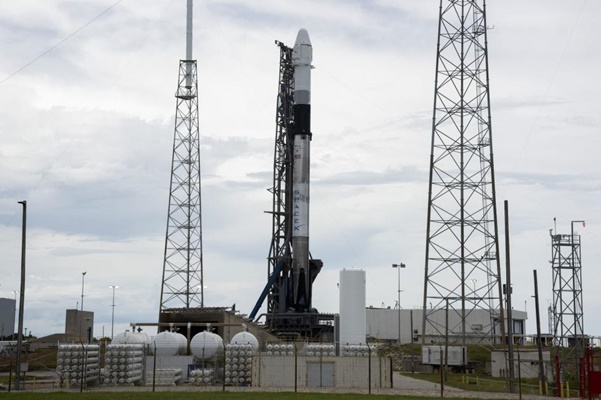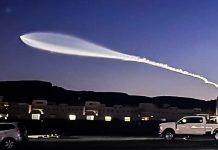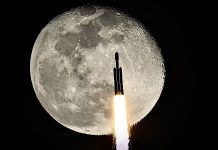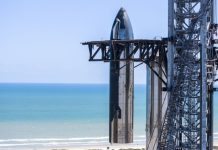
KENNEDY SPACE CENTER, Fla., Dec. 4 (UPI) — SpaceX plans to launch its 19th cargo mission to the International Space Station early Wednesday afternoon, carrying 5,700 pounds of supplies, experiments and a new high-tech toolbox that will keep robotic equipment ready for spacewalks.
NASA said the mission will carry a hyperspectral imaging system for the Japanese government capable of scanning the Earth’s surface for types of geologic processes in mineral and oil resource exploration.
Liftoff is planned for 12:51 p.m. from Launch Complex 40 at Cape Canaveral Air Force Station, Fla. The Air Force said weather is 90 percent favorable for launch, with a backup date Thursday, if needed. Launches to the space station have instantaneous launch windows to catch the station in orbit.
There is, however, a risk of strong upper level winds, Air Force and SpaceX officials said.
“If we look at the predictions, we think we are OK,” said Jessica Jensen, a mission management director with SpaceX. “We launch data balloons to measure actual winds. We won’t know until tomorrow.”
NASA has named the new toolbox Robotic Tool Stowage Assembly, or RiTS, and nicknamed it a “Robot Hotel” because it will store robotic equipment in ideal conditions, outside the station. That will mean such equipment will be in tip-top shape for spacewalks, but it will also free up room inside the station and avoid the need to carry such tools through the equipment airlocks.
“The purpose is to protect sensitive tools and make them more accessible and easier to use,” said Mark Neuman, RiTS project manager for Northrop Grumman. “The Japanese airlock for equipment is very popular, very busy.”
Two robotic leak detectors will be stored in the toolbox, for example. The leak detectors have mass spectrometers that can find leaks from the space station, NASA officials said.
The leak detectors until now have required 12 hours of preparation time in space, once brought through airlocks, to be usable.
Neuman said the toolbox might stow camera inspection equipment, wire cutters or other robotic equipment in the future.
The tool stowage assembly was developed at NASA’s Goddard Space Flight Center in Greenbelt, Md., in partnership with NASA’s Johnson Space Center in Houston.
Experiments also doubling as marketing efforts that are being sent to the space station include Anheuser-Busch launching more than 3,500 barley seeds. Twenty seeds will be sprouted or grown out. The beer giant said in 2017 that it wants to be the first beer on Mars.
The mission is to launch on a new Falcon 9 rocket that hasn’t been used. Many recent SpaceX launches have employed reused rockets. The Dragon capsule that will carry the cargo previously flew on SpaceX’s CRS-6 and CRS-11.
In January, the capsule is scheduled to re-enter Earth’s atmosphere and splash down in the Pacific Ocean off the coast of Baja California with 3,600 pounds of return cargo.






